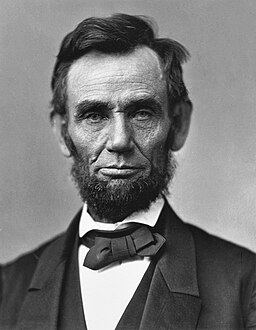
The original Ferris Wheel, sometimes also referred to as the Chicago Wheel, was designed and built by George Washington Gale Ferris Jr. as the centerpiece of the 1893 World's Columbian Exposition in Chicago, Illinois.

Michigan Avenue is a north-south street in Chicago which runs at 100 east on the Chicago grid. The northern end of the street is at Lake Shore Drive on the shore of Lake Michigan in the Gold Coast Historic District. The street's southern terminus is at Sibley Boulevard in the southern suburb of Harvey, though like many Chicago streets it exists in several disjointed segments.
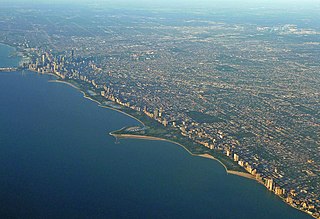
Lincoln Park is a 1,208-acre (489-hectare) park situated along Lake Michigan on North Side in Chicago, Illinois. Named after US President Abraham Lincoln, it is the city's largest public park and stretches for seven miles (11 km) from Grand Avenue on the south to near Ardmore Avenue on the north, just north of the Lake Shore Drive terminus at Hollywood Avenue. Several museums and a zoo are located between North Avenue and Diversey Parkway in the eponymous neighborhood. Further to the north, the park is characterized by parkland, beaches, recreational areas, nature reserves, and harbors. To the south, there is a more narrow strip of beaches east of Lake Shore Drive, almost to downtown. With 20 million visitors per year, Lincoln Park is the second-most-visited park in the United States.

State Street is a large south-north street in Chicago, Illinois, USA and its south suburbs. It begins at North Avenue, the south end of Lincoln Park, runs south through the heart of Downtown Chicago, and ends at the southern city limits, intersecting 127th Street along the bank of the Little Calumet River. It resumes north of 137th Street in Riverdale and runs south intermittently through Chicago's south suburbs until terminating at New Monee Road in Crete, Illinois. Its intersection with Madison Street has marked the base point for Chicago's address system since 1909.

The Hampton House is a residential condominium located in the Hyde Park neighborhood of Chicago, Illinois on the property that once housed the Hyde Park House, a hotel built by Hyde Park founder Paul Cornell in the 1850s. The property was originally named the Sisson Hotel when constructed in 1918.

Paul Cornell was an American lawyer and Chicago real estate speculator who founded the Hyde Park Township that included most of what are now known as the south and far southeast sides of Chicago in Cook County, Illinois, United States. He turned the south side Lake Michigan lakefront area, especially the Hyde Park community area and neighboring Kenwood and Woodlawn neighborhoods, into a resort community that had its heyday from the 1850s through the early 20th century. He was also an urban planner who paved the way for and preserved many of the parks that are now in the Chicago Park District. Additionally, he was a successful entrepreneur with interests in manufacturing, cemeteries, and hotels.

The 7th Congressional District of Illinois covers parts of Cook County, as of the 2011 redistricting that followed the 2010 census. All or parts of Bellwood, Chicago, Forest Park, Oak Park, Maywood, and Westchester are included. Democrat Danny K. Davis has represented the district since January 1997.

Washington Park is a 372-acre (1.5 km2) park between Cottage Grove Avenue and Martin Luther King Drive, located at 5531 S. Martin Luther King Dr. in the Washington Park community area on the South Side of Chicago in Cook County, Illinois. It was named for President George Washington in 1880. Washington Park is the largest of four Chicago Park District parks named after persons surnamed Washington. Located in the park is the DuSable Museum of African American History. This park was the proposed site of the Olympic Stadium and the Olympic swimming venue for Chicago's bid to host the 2016 Summer Olympics. Washington Park was added to the National Register of Historic Places on August 20, 2004.
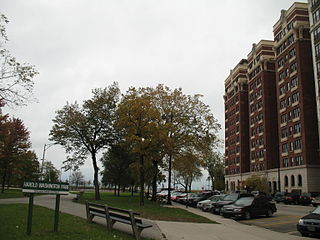
Harold Washington Park is a small park in the Chicago Park District located in the Hyde Park community area on the South Side of Chicago, Illinois, USA. It was recently named for lawyer, state legislator, U.S. congressman, Hyde Park resident, and the first African American Chicago Mayor Harold Washington (1922–1987). The Park District officially calls the park Harold Washington Playlot Park with a designated address of 5200 S. Hyde Park Blvd Chicago, IL 60615. It is one of 4 Chicago Park District parks named after persons surnamed Washington. It is one of 40 Chicago Park District parks named after influential African Americans. The Park is bounded by East 53rd Street on the south, South Hyde Park Boulevard on the west, and Lake Shore Drive to the east. Architecturally, it is flanked to the north by Regents Park and The Hampton House to the south. In addition its southwest corner opposes two National Register of Historic Places Properties.
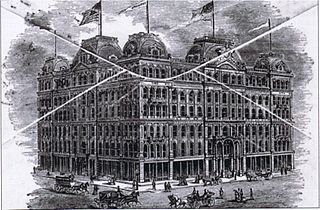
Tremont House was a leading hotel in Chicago, United States, that served as the Headquarters for the Illinois Republican Party during the 1860 Republican National Convention held at the nearby Wigwam as they lobbied for Abraham Lincoln's nomination. Both Lincoln and Stephen Douglas started their Senatorial campaigns from the balcony of this hotel. It was the third hotel bearing this name constructed at the Southeast corner of Lake Street and Dearborn in Chicago. It was a 260-room hotel by early Chicago architect John M. Van Osdel, who is known as the architect of the Illinois Executive Mansion. It was a block masonry structure with the finest amenities of the day. The original Tremont House built in 1833 had been named after the Boston Tremont House. In 1861, this building served as Douglas' deathplace.
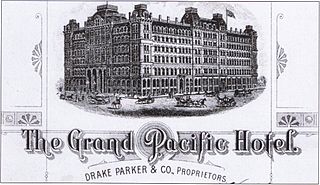
The Grand Pacific Hotel (1873–1895) was one of the first two prominent hotels built in Chicago, Illinois, after the Great Chicago Fire. The hotel, designed by William W. Boyington and managed for more than 20 years by John Drake, was located on the block bounded by Clark Street, LaSalle, Quincy and Jackson.
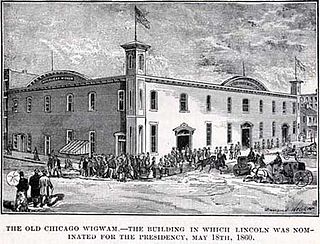
The Wigwam was a convention center and meeting hall that served as the site of the 1860 Republican National Convention. It was located in Chicago, Illinois at Lake Street and Market near the Chicago River. This site had previously been the site of the Sauganash Hotel, Chicago's first hotel. This is where supporters ushered Abraham Lincoln to the party nomination and the eventual U.S. Presidency. The location at Lake and Wacker was designated a Chicago Landmark on November 6, 2002. The name Wigwam, although separate structures, was later associated with host locations for both the 1864 Democratic National Convention and the 1892 Democratic National Convention, which were hosted in Chicago.

Sauganash Hotel is a former hotel; regarded as the first hotel in Chicago, Illinois. Built in 1831, it was located at Wolf Point in the present day Loop community area at the intersection of the north, south and main branches of the Chicago River. The location at West Lake Street and North Wacker Drive was designated a Chicago Landmark on November 6, 2002. The hotel changed proprietors often in its twenty-year existence and briefly served as Chicago's first theater. It was named after Sauganash, an interpreter in the British Indian Department.

Roosevelt Road is a major east-west street in the city of Chicago, Illinois, and its western suburbs. It is 1200 South in the city's street numbering system, but only 1 mile (1.6 km) south of Madison Street. It runs under this name from Columbus Drive to the western city limits, then continues through the western suburbs including Lombard, Wheaton and, West Chicago until it reaches Geneva, where it is known as State Street. 12th Street was renamed to Roosevelt Road on May 25, 1919, in recognition of President Theodore Roosevelt, who had died the previous January. In 1928 the new U.S. Route 330 (US 330), a different alignment of US 30, went down Roosevelt Road to Geneva, in 1942 it was redesignated as US 30 Alternate. In 1972, after the route had been discontinued, Roosevelt Road outside Chicago became Illinois Route 38.

Rush Street is a one-way street in the Near North Side community area of Chicago in Cook County, Illinois, United States. The street, which starts at the Chicago River between Wabash and North Michigan Avenues, runs directly north until it slants on a diagonal as it crosses Chicago Avenue then it continues to Cedar and State Streets, making it slightly less than a mile long. One lane also runs southbound from Ohio Street (600N) to Kinzie Street (400N) as part of a two-way street segment. It runs parallel to and one block west of the Magnificent Mile on the two-way traffic North Michigan Avenue, which runs at 100 east up to 950 north. The street, which is also one block east of the one-way southbound Wabash Avenue, formerly ran slightly further south to the Chicago River where over time various bridges connected it to the Loop, Chicago's central business district.

Loop Retail Historic District is a shopping district within the Chicago Loop community area in Cook County, Illinois, United States. It is bounded by Lake Street to the north, Ida B. Wells Drive to the south, State Street to the west and Wabash Avenue to the east. The district has the highest density of National Historic Landmark, National Register of Historic Places and Chicago Landmark designated buildings in Chicago. It hosts several historic buildings including former department store flagship locations Marshall Field and Company Building, and the Sullivan Center. It was added to the National Register of Historic Places on November 27, 1998. It includes 74 contributing buildings and structures, including 13 separately listed Registered Historic Places, and 22 non-contributing buildings. Other significant buildings in the district include the Joffrey Tower, Chicago Theatre, Palmer House, and Page Brothers Building. It also hosts DePaul University's College of Commerce, which includes the Kellstadt Graduate School of Business and the Robert Morris College.

Indian Village Is the nickname given to the southeast portion of the Kenwood community area of Chicago, Illinois, United States. It is roughly bounded by Lake Shore Drive to the east Burnham Park to the north, 51st Street to the south, Harold Washington Park to the southeast, and the Illinois Central Railroad tracks used by the Metra's South Shore and Metra Electric Lines to the West. Many of the buildings in the neighborhood are named after Native American Indian tribes including the National Register of Historic Places-designated (NRHP) Narragansett and the Chicago Landmark Powhatan Apartments. Other buildings include several Algonquin Apartment buildings and the Chippewa.

Hotel Windermere was a hotel in Hyde Park, Chicago, United States, located at 56th Street and Cornell Avenue. It was built in 1892 for the Columbian Exposition. In 1924 it was rebuilt with a West and East hotel under Rapp & Rapp, who also built the Chicago Theatre and the Tivoli Theatre. The 12-story hotel had 482 guest rooms and 200 apartments and had an underground tunnel connecting the two hotels. Over the years Windermere East attracted guests such as John Rockefeller, Philip Roth and American football teams. Windermere West was demolished in 1959 to make way for a parking lot, and in 1981 Windermere East was converted into apartments and placed on the National Register of Historic Places a year later under the title Hotel Windermere East.






